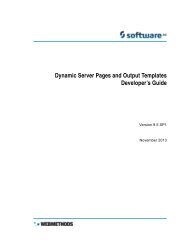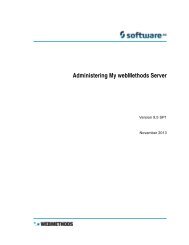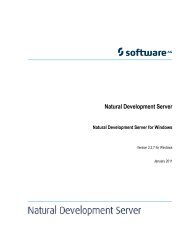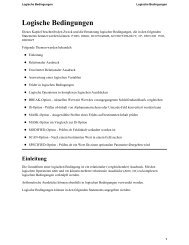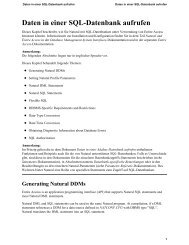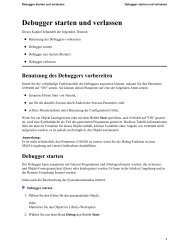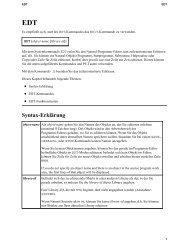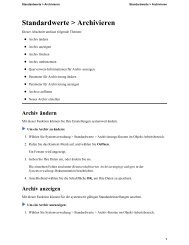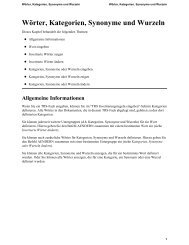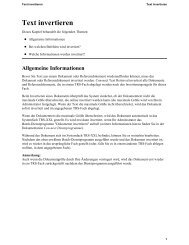Tamino XQuery User Guide - Software AG Documentation
Tamino XQuery User Guide - Software AG Documentation
Tamino XQuery User Guide - Software AG Documentation
Create successful ePaper yourself
Turn your PDF publications into a flip-book with our unique Google optimized e-Paper software.
Performing Update Operations<br />
In <strong>Tamino</strong> <strong>XQuery</strong> you can perform the following elementary update operations on the node level:<br />
inserting, deleting, replacing and renaming. All update operations follow the syntactic pattern<br />
that they begin with the keyword update. You can either specify directly one of the update operations<br />
using insert, delete, replace, rename or you can construct more complex expressions by<br />
using a special form of the FLWOR expression that is only used for update operations. In general,<br />
all update operations have to result in well-formed documents.<br />
Inserting Nodes<br />
For inserting nodes you have to specify two expressions. The first expression represents the node(s)<br />
to be inserted and the second expression determines the update node, namely the position in all<br />
matching documents at which the insert operation should take place. As a result, the documents<br />
will contain the additional element or attribute nodes inserted at the update node. This is done<br />
differently for element and attribute nodes.<br />
Inserting Element Nodes<br />
Consider the following query expression that extends our current bibliography:<br />
update insert<br />
<br />
XML Schema Part 0: Primer<br />
<br />
Fallside<br />
David C.<br />
IBM<br />
<br />
World Wide Web Consortium<br />
0.00<br />
<br />
into input()/bib<br />
This query inserts the book element as last child element of each bib element. Using the keyword<br />
into always tries to insert an element as the last child element of the update node. If the update<br />
node has not yet any child elements, the elements to insert will then be its first child elements.<br />
Apart from into there are two other keywords that you can use when inserting element nodes.<br />
Using preceding the element nodes will be inserted as preceding siblings to the update node.<br />
Using following the element nodes will be inserted as siblings following the update node.<br />
38<br />
<strong>XQuery</strong> <strong>User</strong> <strong>Guide</strong>



